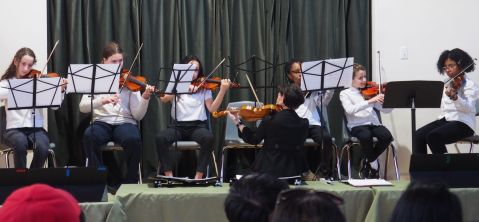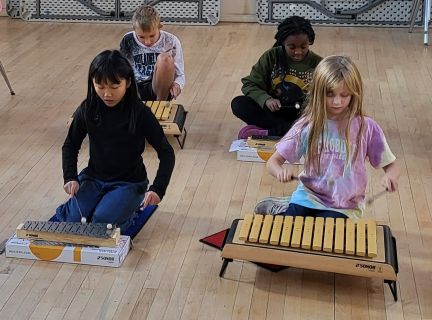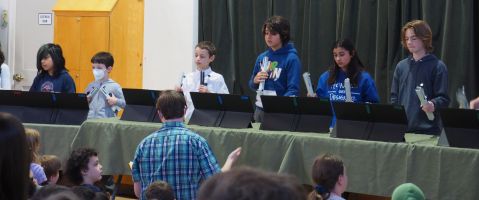MUSIC

 Most importantly, vocal music is woven deeply into the fabric of life at Princeton Friends School and is as reflective of the notion of “voice” as the spoken words that emerge from the silence of Settling In or the written words captured in a student’s poem. All major school events use music to bring the community together, drawing our many individual voices into one voice. The songs that provide a sense of continuity and connectedness within our community tell stories, integrate with other disciplines, engage our sense of humor, and carry enduring messages that connect with the school’s Quaker underpinnings. Whether responding to crises that touch our lives, or celebrating the accomplishments of our community, Princeton Friends School children and adults clearly understand and appreciate the power of music to draw us together, to heal, and to express the soul-lifting qualities of our shared experience.
Most importantly, vocal music is woven deeply into the fabric of life at Princeton Friends School and is as reflective of the notion of “voice” as the spoken words that emerge from the silence of Settling In or the written words captured in a student’s poem. All major school events use music to bring the community together, drawing our many individual voices into one voice. The songs that provide a sense of continuity and connectedness within our community tell stories, integrate with other disciplines, engage our sense of humor, and carry enduring messages that connect with the school’s Quaker underpinnings. Whether responding to crises that touch our lives, or celebrating the accomplishments of our community, Princeton Friends School children and adults clearly understand and appreciate the power of music to draw us together, to heal, and to express the soul-lifting qualities of our shared experience.


